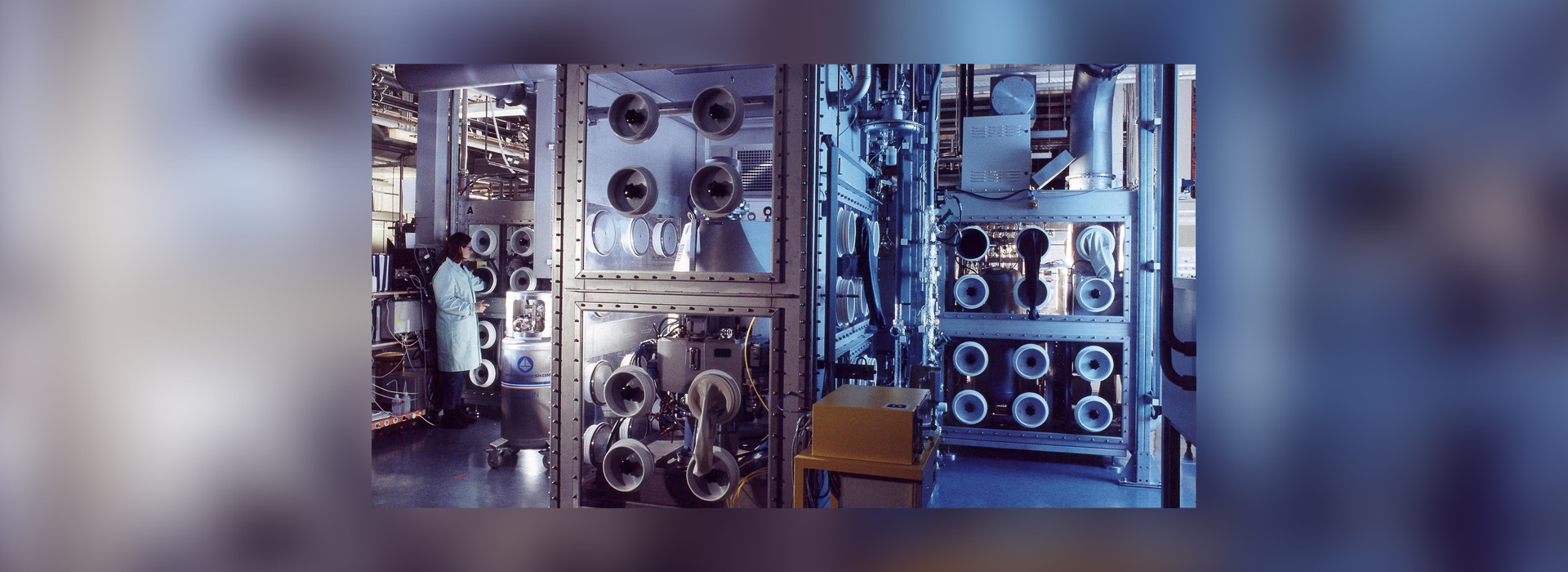The Karlsruhe Tritium Laboratory (TLK)
The Institute for Astroparticle Physics (IAP) operates the European Tritium Laboratory Karlsruhe (TLK), a semi-technical scale facility for processing tritium, the radioactive hydrogen isotope. With its license to handle up to 40 grams of tritium, its present site inventory of about 30 grams of tritium, and its extensive infrastructure and experimental apparatus, TLK is almost unique - only Japan operates a research laboratory with a similar tritium inventory, however with a much smaller laboratory area.
TLK is a major facility of the German Helmholtz-Gemeinschaft research organisation.
More than 20 glove box systems, total volume of about 190 m³, are operated in an area of 1600 m² for experiments and infrastructure facilities. The TLK can look back on a history of more than 25 years of safe operation and experience with tritium.
History
| 1984 | First concept of a Tritium Laboratory |
| 1987 | First contracts awarded to the industry |
| 1992 |
First successful official approval test of particular sections
|
| 1993 |
Opening of the Tritium Laboratory Karlsruhe Approval from the Ministry of the Environment for the use of 10 g tritium |
| 1995 |
Tritium experiments with PETRA and CAPRICE Increase of the tritium quantity to 20 g |
| 1996 | Increasing of the working permission to 40 g tritium |
| 2001 |
Decision for the Tritium Laboratory as location for KATRIN Proposal for the ITER fuel cycle |
| 2007 |
New working permission replaces all previous partial permissions
|
| 2010 | Delivery of KATRIN WGTS demonstrator for cryotest |
| 2015 | Delivery of KATRIN WGTS and CPS |
| 2016 | KATRIN First Light measurement campaign |
| 2018 | Inaugaration of KATRIN with first tritium measurements |
| 2019 | Tritium circulation of up to 2.8 kg within KATRIN |
| 2024 | 1000 days of tritium operation of the KATRIN experiment with an integral throughput of 31.5 kg |

